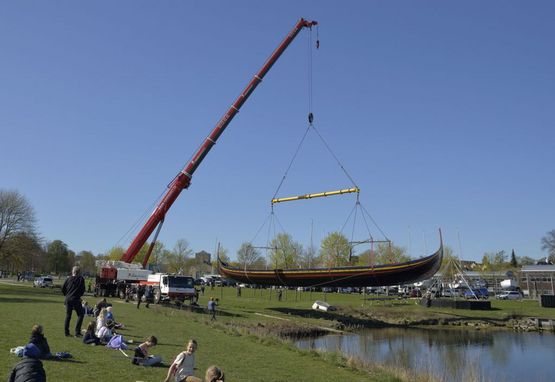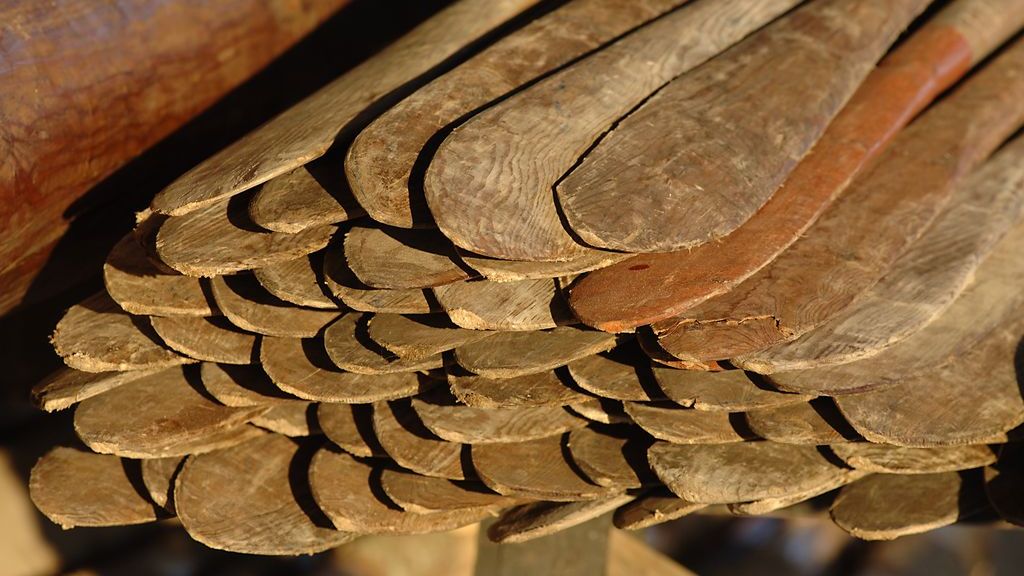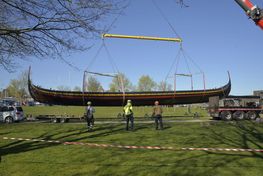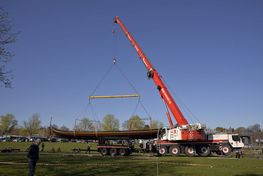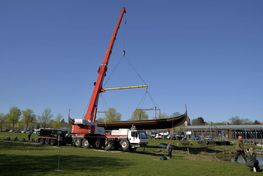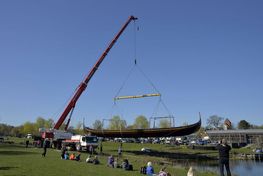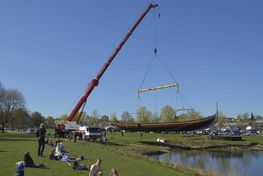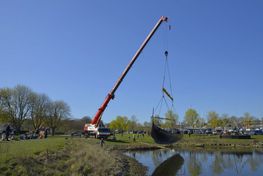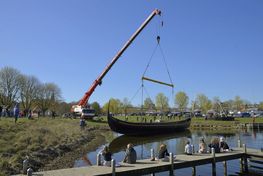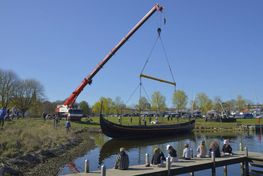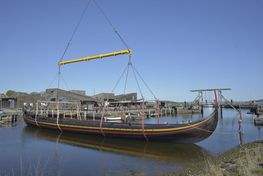Normally, the launch of the 30 meter long and 8 tons heavy long ship is carried by hand, but this requires that a lot of volunteers, a total of 100-150 men m / k, stand really close, and this is not going to happen this year.
The Sea Stallion was therefore launched today with the help of a large mobile crane.
This is effective because it takes only a few people to do the job and thus does not expose employees or the volunteer boat guild members to be exposed to any risk of infection.
We can't wait to launch the Long Ship, as it will dry out and be damaged by standing ashore now that the warm spring weather has arrived.
The spring launch - just like everything else in this era - was completely different than it used to be.
The large community of hundreds of volunteers, brought together by their interest in Viking ships, was replaced by a few concentrated - and slightly nervous - museum people and a large mobile crane.
The alternate launch took about four hours of rigging the heavy lifting straps and two lifting yokes to ensure that the ship did not suffer damage during the lift. When everything was in place, it took just a few minutes to lift the Sea Stallion unharmed the 20 meters into the museum harbour.
As the large mobile crane packed up and drove away - despite the glorious sunshine - a quiet sadness was felt that we will have to wait a little longer before we all can gather again around the Viking ships.
Corona has put a temporary stop on the sailings with the Viking ships and thus also for the great experiences that the voyages bring for both volunteer seamen and all of us others who follow the ships' long voyages on-line.
If we did not know before, then the corona and the social distance between us made it clear what it really means when we talk about the community, life and traditions of the Viking ships and the clinker-built wooden boats, and why 'Nordic clinker traditions' are nominated to be included on UNESCO's representative list of humanity's living cultural heritage.
